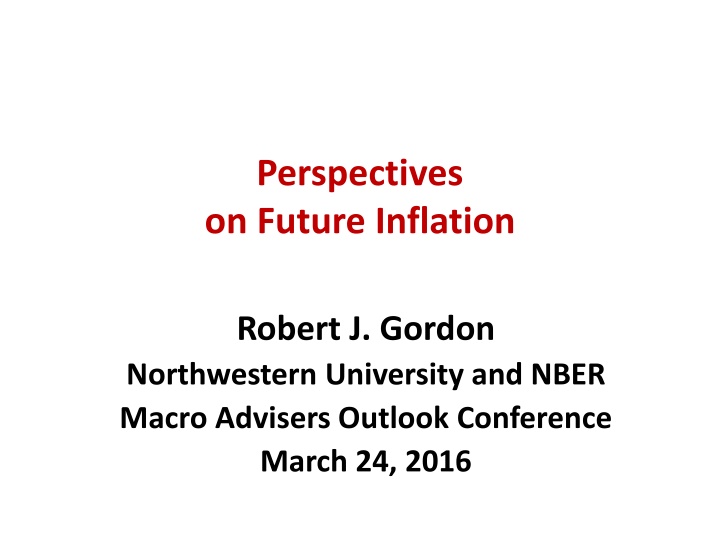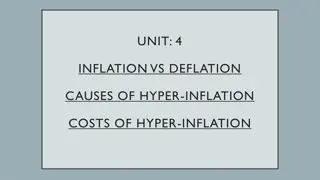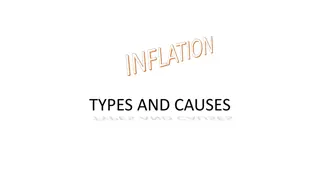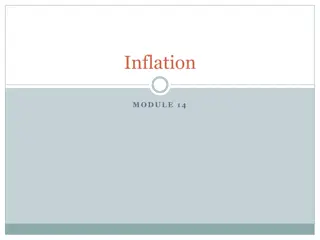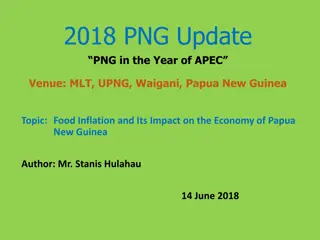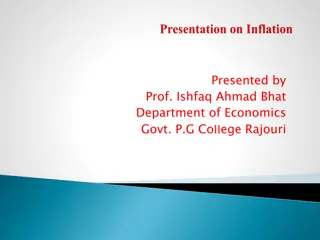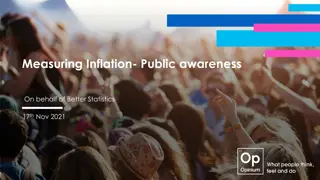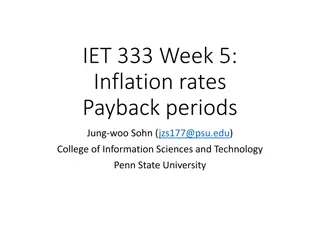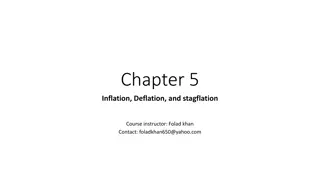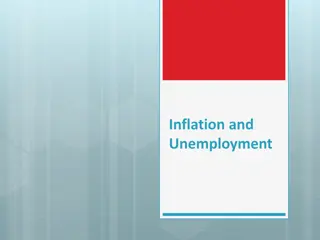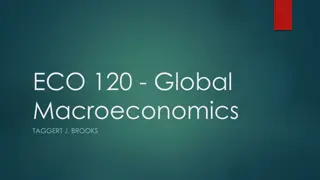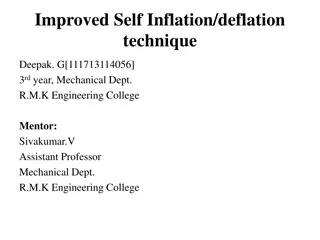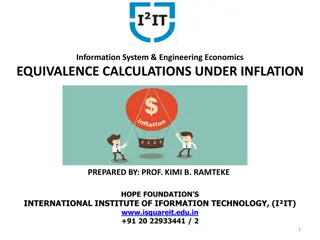Perspectives on Future Inflation and Inflation Modeling
This content discusses future inflation perspectives, inflation modeling elements, the role of short-term unemployment rates, changes in productivity growth trends, challenging tests for inflation models, and specific models analyzed for different periods from 1996 to 2015. The data on inflation simulation, unemployment rates, and key variables offer insights into the complex dynamics of inflation prediction and modeling.
Download Presentation

Please find below an Image/Link to download the presentation.
The content on the website is provided AS IS for your information and personal use only. It may not be sold, licensed, or shared on other websites without obtaining consent from the author.If you encounter any issues during the download, it is possible that the publisher has removed the file from their server.
You are allowed to download the files provided on this website for personal or commercial use, subject to the condition that they are used lawfully. All files are the property of their respective owners.
The content on the website is provided AS IS for your information and personal use only. It may not be sold, licensed, or shared on other websites without obtaining consent from the author.
E N D
Presentation Transcript
Perspectives on Future Inflation Robert J. Gordon Northwestern University and NBER Macro Advisers Outlook Conference March 24, 2016
My Inflation Model: Basic Elements Start from na ve Phillips curve, inflation depends on 4 quarterly lags of inflation and current unemployment gap NAIRU estimated endogenously Add: long lags (24 on inflation, 0-4 unemployment) Short-term U vs. total U (periods since 2007) Food-energy and import prices Change in productivity growth trend
Role of the Short-term Unemployment Rate Figure 6. Total, Short Run, and Long Run Unemployment Rate, 1960:Q1 to 2015:Q2 12 Total Unemployment Rate 10 8 Percent 6 Short Run Unemployment Rate 4 2 Long Run Unemployment Rate 0 1960 1965 1970 1975 1980 1985 1990 1995 2000 2005 2010 2015 Year
Eight-quarter Change in Productivity Growth Trend Figure 4b. Eight Quarter Changes of Productivity Trend, 1960:Q1 to 2015:Q2 0.5 0.4 0.3 0.2 0.1 Percent per Year 0 -0.1 -0.2 -0.3 -0.4 -0.5 1960.00 1965.00 1970.00 1975.00 1980.00 1985.00 1990.00 Year 1995.00 2000.00 2005.00 2010.00 2015
Challenging Test for Any Inflation Model: Dynamic Simulations Estimate through part of history, say to 1995 Using those coefficients and holding the NAIRU constant, calculate inflation rate, feeding back lagged values of inflation Simulation data on inflation is calculated, while data on unemployment and other variables is taken as given. Drift of simulation reveals specification error
Short-term Unemployment, Actual, NAIRU, and Forecasts Figure 4. NAIRU and Short Term Unemployment, 1980:Q1 to 2025:Q1 9.0 Simulated Fitted 8.0 Actual Short Term Unemployment 7.0 6.0 Percent 5.0 STU Projection a 4.0 3.0 STU Projection b 2.0 1.0 0.0 1980 1985 1990 1995 2000 2005 2010 2015 2020 2025
Future Forecasts Driven Only by Unemployment Gap Forecasts are for core inflation, not headline inflation Zero contribution to inflation, up or down, from: Food-energy prices Import prices Changes in productivity trend Notice very slow response of inflation to a prolonged negative unemployment gap
The Pace of Accelerating Inflation Total Unemployment Short-term Unemployment Core inflation: 2016:Q1 2018:Q1 2020:Q1 2022:Q1 2024:Q1 4.5 3.5 4.0 3.25 1.33 1.83 2.14 2.45 2.79 1.33 1.92 2.47 2.96 3.48
Conclusion Inflation rises each year by only about 1/3 of the unemployment gap Substantial room for absorption of long-term unemployed and discouraged workers without breaching Fed s inflation target Expansion may die of old age before inflation rises above 2 percent on a sustained basis
